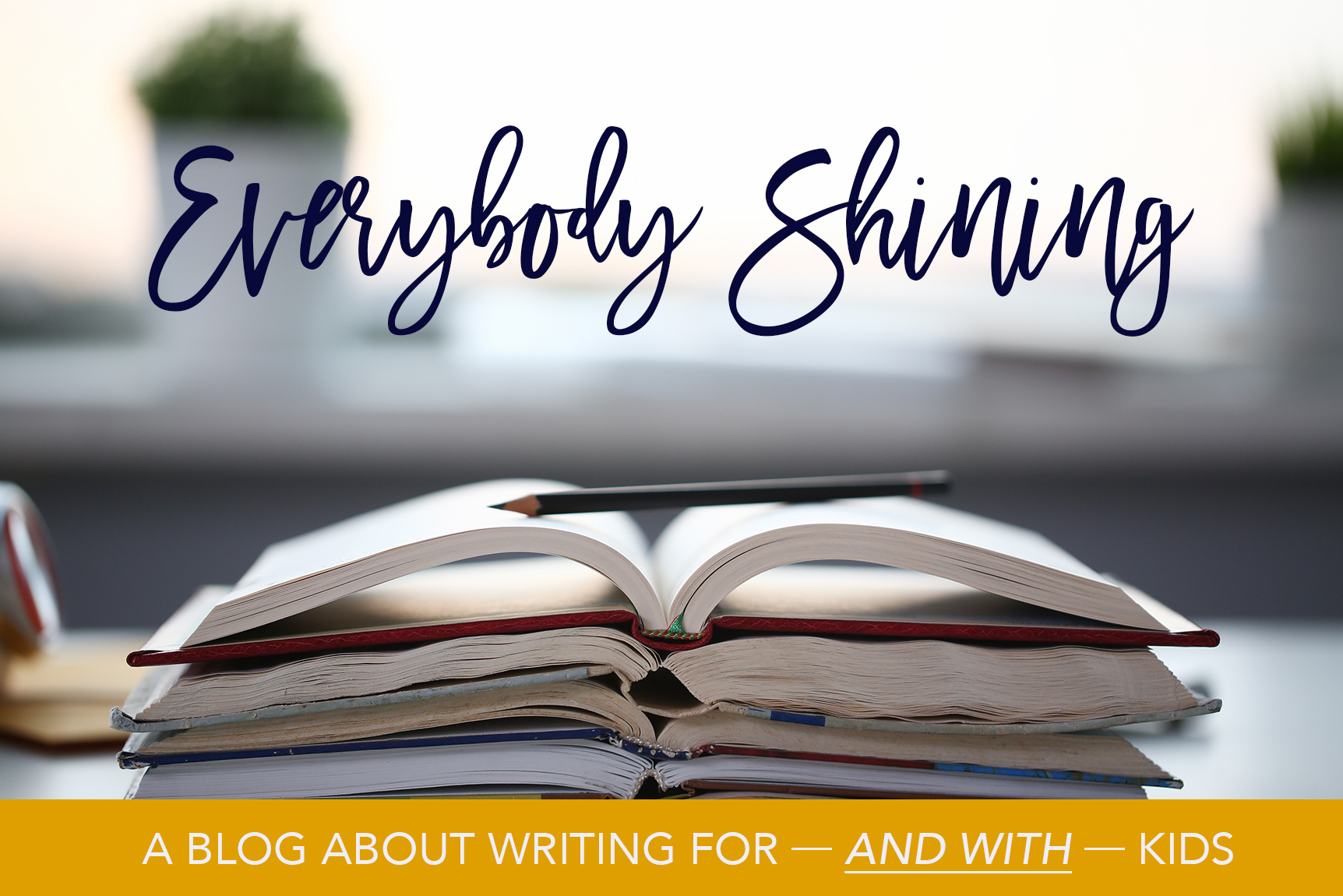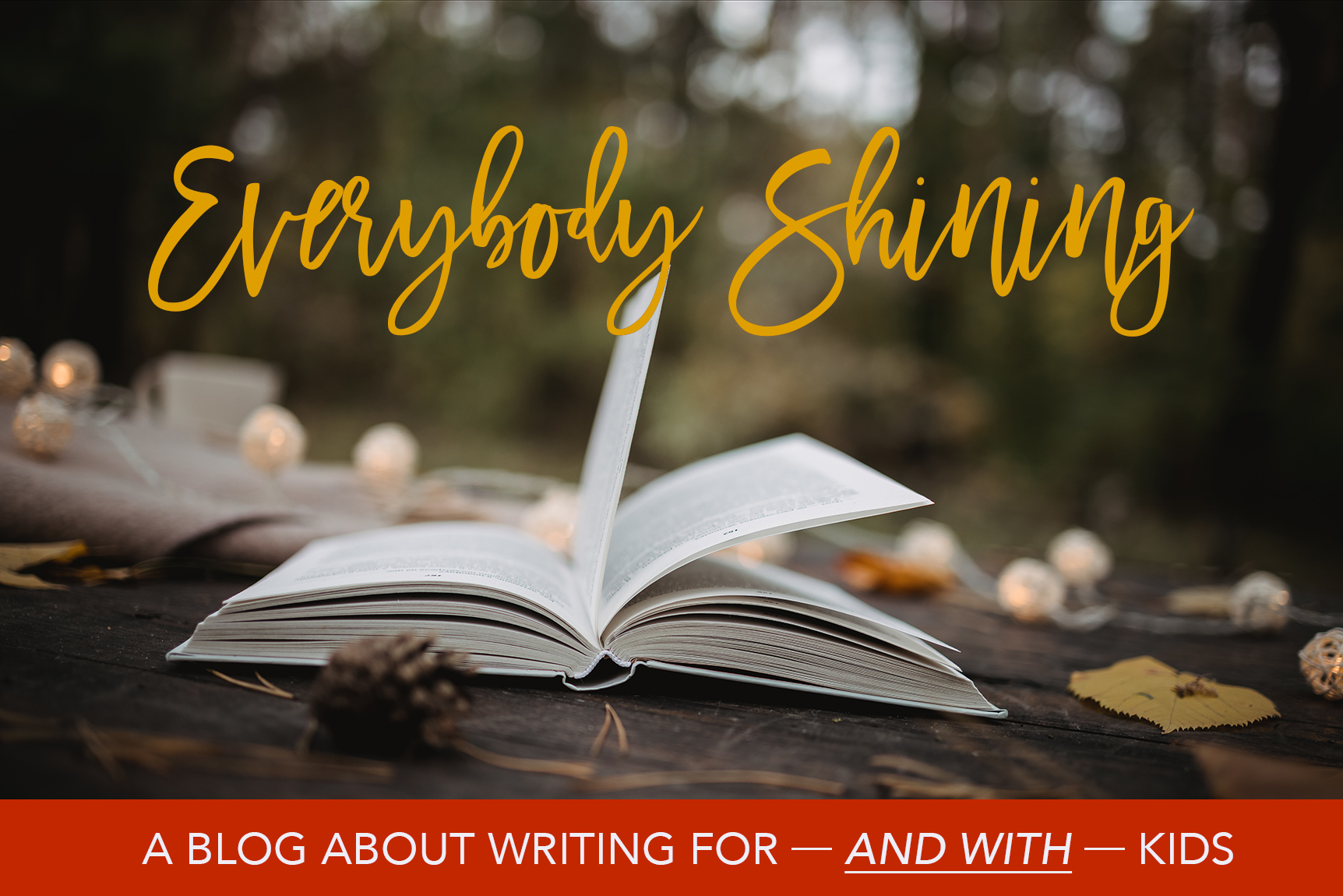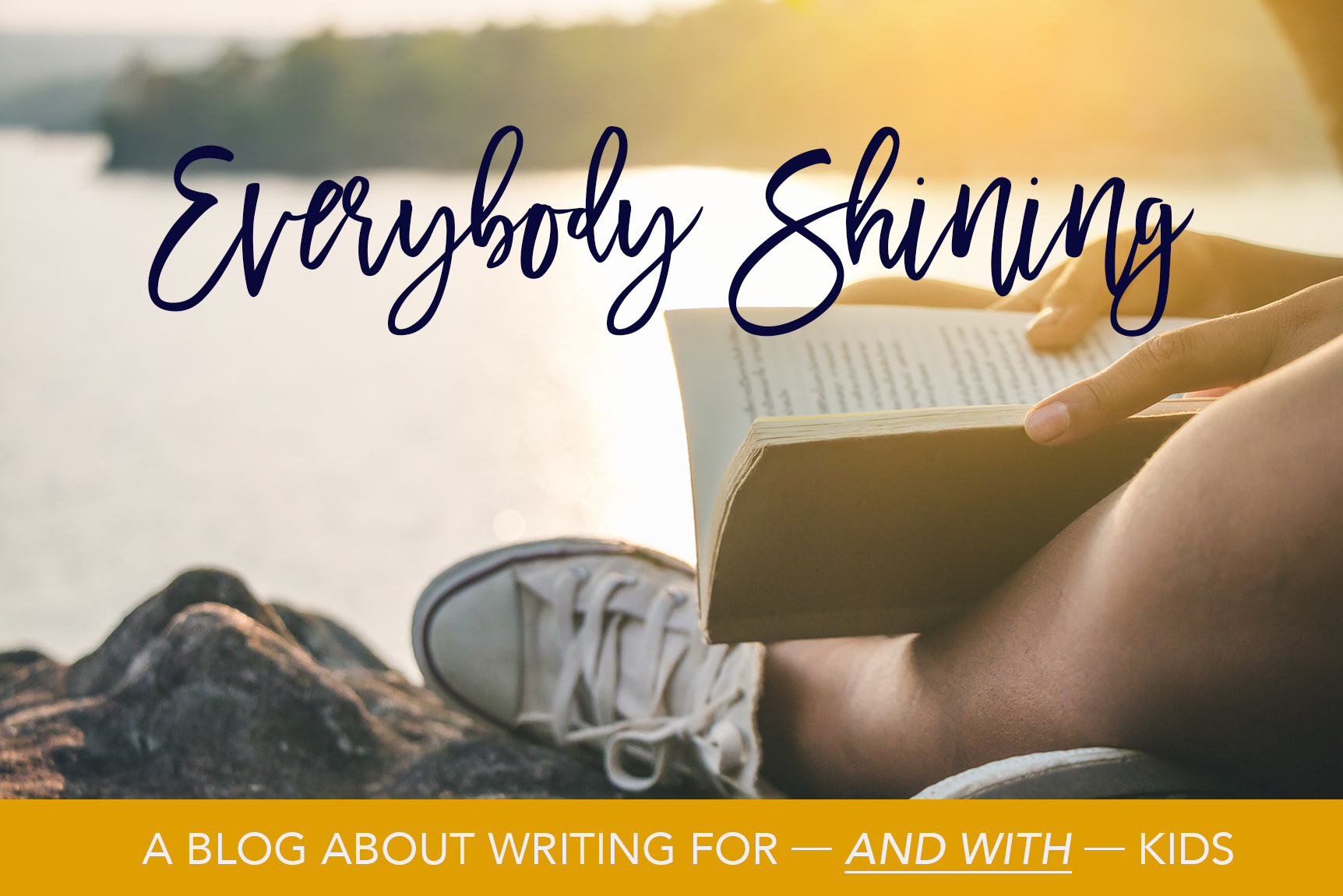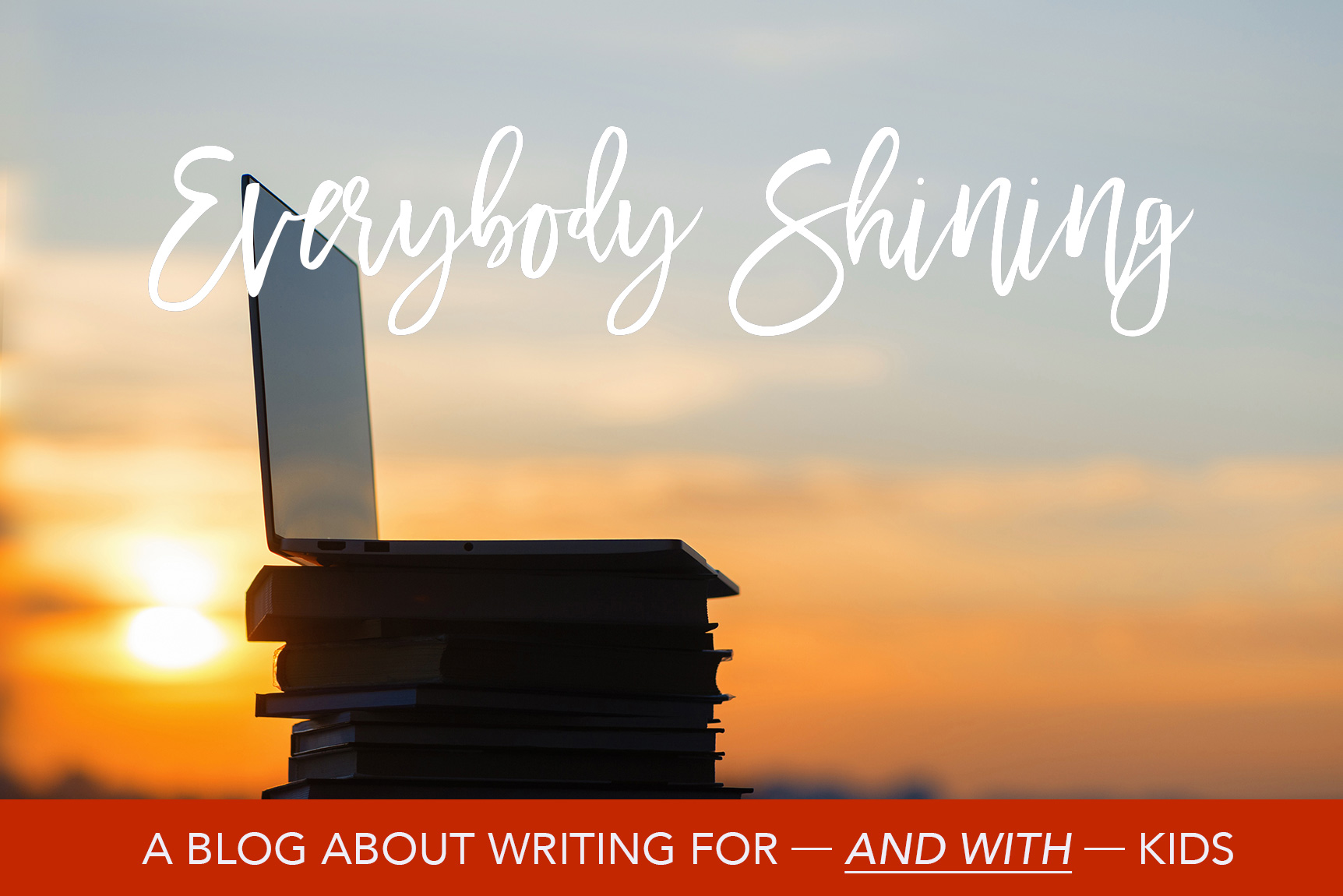It might seem strange to launch a blog about writing and teaching with a post about editors, but hear me out. I want us to get away from the idea that writing is a solo endeavor. I want us to get away from the mistaken notion that we have to get our writing right the first time. I want us to feel free to fail miserably as writers–no, not miserably! I want us to fail joyfully, and with gusto. And we can do this if we know someone will be there to catch us when we fall, will help us pick up the beautiful and useful pieces of our stories and essays and poems and start again.
That’s what an editor does. Not a lot of people know this.
It turns out that a lot of young writers—and older writers, for that matter—think that a job of an editor is to correct spelling and grammar, and make sure the writer got her facts straight—which is to say, they may think of an editor as someone who grades your paper.
So it comes as a surprise when I explain that editors spend very little time on commas or spelling mistakes. Editors aren’t correctors; they’re collaborators. While my editor, Caitlyn Dlouhy, doesn’t do any of the actual writing in my books (no matter how much I beg), she’s down in the trenches through the entire writing process, lobbing ideas and suggestions, asking questions, and pushing me to go deeper into characters and scenes. It’s not as simple as me handing in a draft, Caitlyn returning it with comments and suggestions, and then we’re done.
For me, the writing process typically unfolds something like this:
1. I write a cruddy first draft, send it in, then wait for Caitlyn to call to discuss big picture issues. With my new book, The Class, the big picture issue was the book didn’t really have a plot (mildly problematic in a novel, especially one for kids). The first draft was a collection of linked stories, each from the perspective of a different member of a sixth-grade class. While there were a few minor issues that ran through the draft (for example, somebody is stealing items from Mrs. Herrera’s special collection of special things), there wasn’t a looming problem that had to be resolved by the end of the story. Caitlyn felt strongly there needed to be at least one major narrative thread to pull the reader through the book. My assignment, then, was to find the thread that would tie the story together.
Please note that I send my first draft to Caitlyn before writing a second draft. I bring this up because when I googled “Writing Process” while working on this post, I discovered that the order of operations most commonly cited is Pre-write/Draft/Revise/Edit/Publish. Editing, as I mentioned above, isn’t about correcting grammar and spelling, and it’s not a one-time, end-of-the-line thing. For the record, my process is Draft/Get feedback/Revise/Get feedback/Revise/Get feedback/Revise/Get feedback/Throw up my hands and beg, Please, no more!/Publish.
2. After getting Caitlyn’s thoughts on the draft, I revise and send her the second draft. This time Caitlyn sends me notes. These notes tend to be concerned with the shaping and development of the plot and as well as the development of characters—so we’re still talking big picture concerns with the second round of edits. At this point, major changes may still need to be made. In the second draft of The Class, I came up with a plot line in which the students learn that their beloved Mrs. Herrera is on thin ice with the administration for something she did the year before, but no one is quite sure what happened. Of course, an investigation by the class ensues. Here’s Caitlyn’s response to this new subplot:
[F]or this to be a powerful novel, even in a gentle way . . . we need that one more issue, that issue that ups the stakes. Having Mrs. Herrera on the verge of probation doesn’t accomplish this because it’s more something the kids discuss, about something she’d done in the past, and it’s then reconciled in a way that doesn’t really affect the kids beyond they know they will fight to keep their teacher. But it never really feels like a threat to any of them; it isn’t producing much tension. It does, however, get the old brain cells here percolating. What if…and again, just brainstorming here . . . but, what IF this foster girl piece were happening in real time, in the novel as it’s being told. I’m not even sure how that would play out, and how it would knock everything else off kilter so it all needed lining up again. But what if the whole class were in cahoots after a while? And when it became problematic for Mrs. H, they rally together in some way (or not, some are uncomfortable, or nervous, or feel it’s not their place/business, whatever) to support their teacher and this girl, and that leads to a solution for this girl? TRICKY, I know. I know!
Notice that Caitlyn doesn’t tell me what to do here. She’s brainstorming, throwing the spaghetti against the wall to see what sticks, and comes up with idea of bringing the crisis into the present. This is the point where I often (always) want to yell, “Just tell me what to write!” But that’s not an editor’s job. What Caitlyn does in this letter is 1) point out what she thinks is missing from this draft (tension, a real crisis for the students that could change their lives if things don’t work out); and 2) throw out a possible direction for me to go in (bring the crisis into the present day).
3. I go back to the drawing board. This step involves a lot of sighing and pacing and wondering if it’s too late to start another career. And then I return to the draft. Caitlyn’s observation that making a big change “would knock everything else off kilter so it all needed lining up again” sums up why revising can feel like such a daunting task. When you make a big change, you have to make a hundred smaller changes. You have to cut some of your favorite passages and plot developments. You have to come up with new stuff to make the puzzle pieces all fit together. Once I accept that this must be done, I actually enjoy doing it, but there’s always an initial period of resistance and doubt. Can I really shake up my draft that way without destroying it?
4. I write a third draft and send it to Caitlyn. If I’ve solved the big problems with the plot (and typically by this point I have), Caitlyn’s notes become more specific. Sometimes she’s ready to give me line edits, where she goes through the manuscript and points out issues with tone (a not infrequent comment is along the lines of, “This sounds a touch grown-up for an eleven-year-old”), clarity and accuracy. She’ll point out where I’ve slipped into stereotypes (“Does her favorite color have to be pink?”) or could make a more interesting choice: “Maybe instead of a lawyer, her dad could be city planner or a software developer?” At this point she’ll usually send me a copy of the manuscript with her notes and questions written in the margins (along with delightful smiley faces when I’ve made her laugh).
Note that at no point do Caitlyn’s edits include spelling or punctuation corrections, nor—thankfully—a grade. In case you’re wondering, there is someone who corrects this stuff; she’s known as a copyeditor, and there’s no doubt that copyediting a vital part of the process. But it’s not what an editor does.
The importance of an editor’s role in the making of a good story can’t be overemphasized. A good editor is a creative partner, a cheerleader, a coach, a building inspector and a midwife. She’s with you every step of the way, reading and responding. The good news is, there are editors all around us. Parents, friends, siblings, spouses–with a little bit of guidance, they can all give valuable feedback.
In my next post, I’ll talk about how to help students (and teachers!) build their editing skills. See you there!







What a refreshing glimpse into the writing/editing process…you go, girl!
Thanks, Katie!
This is really helpful. Thank so much for sharing these details!
Thanks, Linda!
Hey Frances! I love your book The Secret Language Of girls!